 W
WThe Glorious Revolution of November 1688, also known as the Glorieuze Overtocht or Glorious Crossing by the Dutch, was the deposition of James II and VII, king of England, Scotland and Ireland and replacement by his daughter Mary II and her husband, William III of Orange, stadtholder and de facto ruler of the Dutch Republic. A term first used by John Hampden in late 1689, historian Jeremy Black suggests it can be seen as both the last successful invasion of England and also an internal coup.
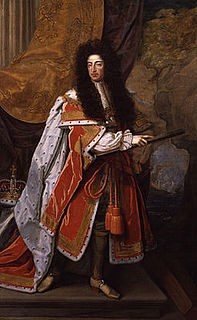 W
WThe Battle of Reading took place on 9 December 1688 in Reading, Berkshire. It was one of only two substantial military actions in England during the Glorious Revolution, and was a decisive victory for forces loyal to William III of Orange. The victory was celebrated in Reading for many years.
 W
WThe Bill of Rights 1689, also known as the Bill of Rights 1688, is a landmark Act in the constitutional law of England that sets out certain basic civil rights and clarifies who would be next to inherit the Crown. It received the Royal Assent on 16 December 1689 and is a restatement in statutory form of the Declaration of Right presented by the Convention Parliament to William III and Mary II in February 1689, inviting them to become joint sovereigns of England. The Bill of Rights lays down limits on the powers of the monarch and sets out the rights of Parliament, including the requirement for regular parliaments, free elections, and freedom of speech in Parliament. It sets out certain rights of individuals including the prohibition of cruel and unusual punishment and confirmed that "Protestants may have arms for their defence suitable to their conditions and as allowed by law". It also includes no right of taxation without Parliament’s agreement. Furthermore, the Bill of Rights described and condemned several misdeeds of James II of England.
 W
WThe 1689 Boston revolt was a popular uprising on April 18, 1689 against the rule of Sir Edmund Andros, the governor of the Dominion of New England. A well-organized "mob" of provincial militia and citizens formed in the town of Boston, the capital of the dominion, and arrested dominion officials. Members of the Church of England were also taken into custody if they were believed to sympathize with the administration of the dominion. Neither faction sustained casualties during the revolt. Leaders of the former Massachusetts Bay Colony then reclaimed control of the government. In other colonies, members of governments displaced by the dominion were returned to power.
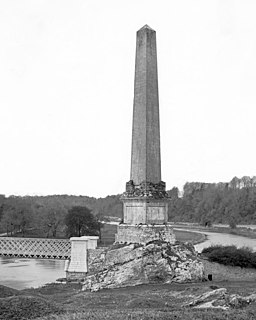 W
WThe Boyne Obelisk, also known as King William's Obelisk, was an obelisk located in Oldbridge, near Drogheda, County Louth, Ireland.
 W
WThe Claim of Right is an Act passed by the Parliament of Scotland in April 1689. It is one of the key documents of United Kingdom constitutional law and Scottish constitutional law.
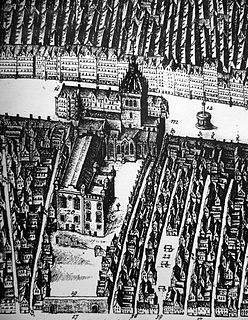 W
WThe 1689 Convention of Estates sat between 16 March 1689 and 5 June 1689 to determine the settlement of the Scottish throne, following the deposition of James VII in the 1688 Glorious Revolution. The Convention of the Estates of Scotland was a sister-institution to Parliament, comprising the three estates of bishops, barons and representatives of the Burghs. Historically, it had been summoned by the king of Scots for the limited purpose of raising taxes, and could not pass other legislation. Unlike the English Convention Parliament of 1689, the 1689 Scottish Convention was also a contest for control of the Church of Scotland or Kirk.
 W
WThe English Convention (1689) was an assembly of the Parliament of England which met between 22 January and 12 February 1689 and transferred the crowns of England and Ireland from James II to William III and Mary II.
 W
WThe Declaration of Right, or Declaration of Rights, is a document produced by the English Parliament, following the 1688 Glorious Revolution. It sets out the wrongs committed by the exiled James II, the rights of English citizens, and the obligation of their monarch.
 W
WThe term "English Revolution" has been used to describe two different events in English history. The first to be so called—by Whig historians—was the Glorious Revolution of 1688, whereby James II was replaced by William III and Mary II as monarch and a constitutional monarchy was established.
 W
WThe Flag of the Orange Order, also known as the Boyne Standard or the Orange Standard, is the flag used by the Northern Irish Protestant fraternal organisation, the Orange Order. The flag consists of an orange background with a purple star and a Cross of Saint George in canton.
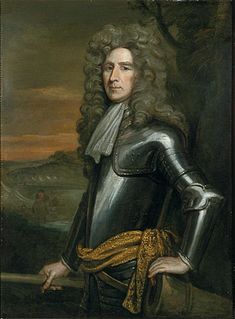 W
WThe Invitation to William was a letter sent by seven notable English nobles, later called "the Immortal Seven", to stadtholder William III, Prince of Orange, received by him on 30 June 1688. In England, the heir apparent to the throne, James Francis Edward Stuart, had just been born to the unpopular King James II of England, and baptised a Catholic. The letter asked William, who was a nephew and son-in-law of James II, to use military intervention to force the king to make his eldest daughter, Mary, William's Protestant wife, his heir. The letter alleged that the newborn prince was an impostor.
 W
WLady Theodosia Ivie or Ivy (1628–1697) was an aristocratic heiress and a figure of notoriety in the east end of London in the 17th century. Famed for her “wit, beauty and cunning in law above all others,” her claims to own land stretching from Wapping to Ratcliff led to a constant stream of litigation which ran for almost 75 years. At one particular trial, presided over by Lord Chief Justice Jeffreys, evidence emerged that Ivie had presented the court with forged deeds on which she made her land claims and Jeffreys subsequently arranged for charges to be brought against her for forgery.
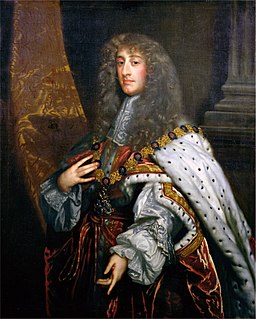 W
WJames II and VII was King of England and Ireland as James II, and King of Scotland as James VII, from 6 February 1685 until he was deposed in the Glorious Revolution of 1688. He was the last Catholic monarch of England, Scotland, and Ireland; his reign is now remembered primarily for struggles over religious tolerance. However, it also involved the principles of absolutism and divine right of kings, and his deposition ended a century of political and civil strife by confirming the primacy of Parliament over the Crown.
 W
WThe Killing Time was a period of conflict in Scottish history between the Presbyterian Covenanter movement, based largely in the south west of the country, and the government forces of Kings Charles II and James VII. The period, roughly from 1679 to the Glorious Revolution of 1688, was subsequently called The Killing Time by Robert Wodrow in his The History of the Sufferings of the Church of Scotland from the Restoration to the Revolution, published in 1721–22. It is an important episode in the martyrology of the Church of Scotland.
 W
WLeisler's Rebellion was an uprising in late-17th century colonial New York in which German American merchant and militia captain Jacob Leisler seized control of the southern portion of the colony and ruled it from 1689 to 1691. The uprising took place in the aftermath of England's Glorious Revolution and the 1689 Boston revolt in the Dominion of New England, which had included New York. The rebellion reflected colonial resentment against the policies of deposed King James II.
 W
WThis is a list of the members of the British nobility and gentry, who in 1688 deserted King James II and pledged their allegiances to Prince William of Orange, as the events of the Glorious Revolution unfolded.Admiral Matthew Aylmer, who played a significant role in diverting the loyalty of the Royal Navy from King James to William of Orange. Colonel Berkley, possibly Lord Fitzharding. Captain Henry Bertie, brother of the Earl of Abingdon. Squire Bray Henry Booth, 2nd Baron Delamere, took arms in Cheshire on November 1688, appearing in Manchester with 50 armed and mounted men, which had trebled before reaching Bowden Downs. James Butler, 2nd Duke of Ormonde William Cavendish, 4th Earl of Devonshire, appeared in arms at Derby, proceeded to Nottingham, which soon became the headquarters of the Northern insurrection. John Cecil, 5th Earl of Exeter Hugh Cholmondeley, 2nd Viscount Cholmondeley, joined the northern insurrection at Nottingham in 1688, created Baron in 1689 and Earl in 1706. Charles Cokayne, 3rd Viscount Cullen Squire Coote George Compton, 4th Earl of Northampton Henry Compton, youngest son of the 2nd Earl of Northampton, Bishop of London, P.C. George Churchill (1653–1710), brother of John Churchill and captain at sea, afterwards admiral. John Churchill, Baron Churchill of Sandridge (1650–1722), deserted on 25 Nov 1688, arguably "the death-blow for the Royal Cause". Afterwards created Earl and later Duke of Marlborough and captain-general. Sir Richard Dutton, or possibly Sir Ralph Dutton, MP for Gloucester Thomas Fairfax, 5th Lord Fairfax of Cameron, MP for York. Charles Fane, 3rd Earl of Westmorland Henry FitzRoy, 1st Duke of Grafton, the first who on 24 November 1688 deserted the King's camp, accompanied by John Churchill. Charles Gerard, 1st Earl of Macclesfield, an "ancient Cavalier who had fought for Charles I, and had shared the exile of Charles II", assembled with William at the Hague in 1688. John Granville, 1st Earl of Bath, placed the fortress at Plymouth, which he commanded, at William's disposal on 18 November 1688, when William had arrived at Exeter. "The invaders therefore had now not a single enemy in their rear." Thomas Grey, 2nd Earl of Stamford Captain Griffith Sir John Guise, Baronet, MP for Gloucester Henry Hamilton-Moore, 3rd Earl of Drogheda Sir Edward Harley, Baronet, in November 1688 took up arms in Worcestershire on behalf of the Prince of Orange. Arthur Herbert, vice admiral, created Earl of Torrington in 1689. Henry Herbert, 4th Baron Herbert of Cherbury, in November 1688 took up arms in Worcestershire on behalf of the Prince of Orange. Henry Howard, 7th Duke of Norfolk, with 300 armed and mounted men, in November 1688 appeared in the market place of Norwich, where he was joined by the mayor and Alderman. Edward Hyde, Lord Cornbury (1661–1723), son of the Earl of Clarendon and one of the first royal commanders to desert. He was the senior officer at Salisbury and deserted with as many troops as he could induce to follow him. Henry Hyde, 2nd Earl of Clarendon (1638–1709), father of Lord Cornbury Robert Leke, 3rd Earl of Scarsdale John Lovelace, 3rd Baron Lovelace, set out for Exeter to join the Prince of Orange, but was taken prisoner at Gloucester. Richard Lumley seized Newcastle for William, created Viscount Lumley in 1689 and Earl of Scarborough in 1690. John Manners, 9th Earl of Rutland Squire Marle Charles Montagu, 4th Earl of Manchester, moved to Nottingham and was joined by Lord Cholmondeley and by Lord Grey de Ruthyn. Edward Osborne, Viscount Latimer, son the Earl of Danby. Peregrine Osborne, Lord Dunblane, son the Earl of Danby. Thomas Osborne, 1st Earl of Danby (1631–1712), seized York for William, was created Duke of Leeds in 1694. James Paynter, tried for and later acquitted of treason in Cornwall. Sir Robert Peyton, Baronet, colonel in the Dutch invasion Charles Powlett, Earl of Wiltshire Charles Bodvile Robartes, 2nd Earl of Radnor Richard Savage, Lord Colchester, son of Earl Rivers Charles Seymour, 6th Duke of Somerset Robert Shirley, Lord Ferrers of Chartley Philip Stanhope, 2nd Earl of Chesterfield Charles Talbot, 12th Earl of Shrewsbury Squire Tibbing, probably Squire Thomas Tipping (1653–1718), former MP for Oxfordshire who had fled to the Netherlands due to a scandal Sir John Trelawney, possibly Sir Jonathan Trelawny, 3rd Baronet Squire Trenchard (1635–1713), possibly William Trenchard of Cutteridge, Wiltshire Henry Yelverton, 15th Baron Grey de Ruthyn, joined the Northern insurrection in 1688, created Viscount de Longueville in 1690.
 W
WGeneral John Churchill, 1st Duke of Marlborough, 1st Prince of Mindelheim, 1st Count of Nellenburg, Prince of the Holy Roman Empire, was an English soldier and statesman whose career spanned the reigns of five monarchs. From a gentry family, he served first as a page at the court of the House of Stuart under James, Duke of York, through the 1670s and early 1680s, earning military and political advancement through his courage and diplomatic skill.
 W
WMary II was Queen of England, Scotland, and Ireland, co-reigning with her husband, William III & II, from 1689 until her death in 1694.
 W
WThe Non-juring schism was a split in the established churches of England, Scotland and Ireland, following the deposition and exile of James II and VII in the 1688 Glorious Revolution. As a condition of office, clergy were required to swear allegiance to the ruling monarch; for various reasons, some refused to take the oath to his successors William III and Mary II. These became known as Non-juring, from the Latin verb iūrō, or jūrō, meaning "swear an oath".
 W
WThe Orange Way, so called because it follows the march in 1688 of Prince William of Orange and his army from Brixham to London, is a 350 miles (560 km) unofficial long-distance walk in England that passes through Devon, Dorset, Wiltshire, Berkshire, Buckinghamshire and London.
 W
WThe Protestant Revolution of 1689, sometimes called Coode's Rebellion after one of its leaders, John Coode, took place in the Province of Maryland when Puritans, by then a substantial majority in the colony, revolted against the proprietary government led by the Roman Catholic Charles Calvert, 3rd Baron Baltimore.
 W
WRoyal Succession Bills and Acts are pieces of (proposed) legislation to determine the legal line of succession to the Monarchy of the United Kingdom.
 W
WThomas Grey, 2nd Earl of Stamford, PC was a British peer and politician.
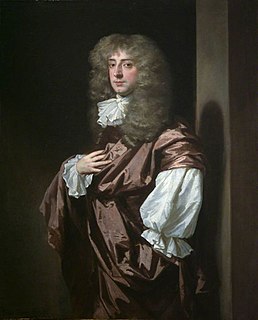 W
WThomas Thynne, 1st Viscount Weymouth was a British peer in the peerage of England.
 W
WWilliam III, also widely known as William of Orange, was sovereign Prince of Orange from birth, Stadtholder of Holland, Zeeland, Utrecht, Guelders, and Overijssel in the Dutch Republic from the 1670s and King of England, Ireland, and Scotland from 1689 until his death in 1702. As King of Scotland, he is known as William II. He is sometimes informally known as "King Billy" in Ireland and Scotland. His victory at the Battle of the Boyne in 1690 is commemorated by Unionists, who display orange colours in his honour. He ruled Britain alongside his wife and cousin Queen Mary II, and popular histories usually refer to their reign as that of "William and Mary".
 W
WThe Wincanton Skirmish occurred on 20 November 1688 during the Glorious Revolution. A small patrol of the English Army led by the Irish officer Patrick Sarsfield, clashed with a detachment of the invading Dutch Army in the town of Wincanton in Somerset. It was one of the few notable actions fought during the campaign which has sometimes acquired the name the "bloodless revolution".